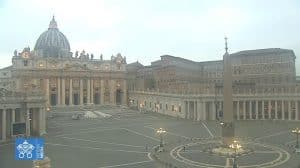
Praedicate Evangelium [Preach the Gospel], the long-awaited Apostolic Constitution for the Reform of the Roman Curia, comes into effect on June 5, the feast of Pentecost. It was released on March 19, the feast of St. Joseph and the ninth anniversary of Pope Francis’s inaugural Mass. The pope hopes the constitution will ensure that the offices of the Vatican fulfill their mission in helping promote the Church as a community of missionary disciples, sharing the gospel and caring for all those in need.
The College of Cardinals requested the reform of the Roman Curia in the pre-conclave meetings of March 2013, and the enormous task was taken up from the beginning of the pontificate of Pope Francis. It is only the fifth time in 500 years that such a task has been undertaken. While Pope St. John Paul II’s constitution, Pastor Bonus in 1988, was called simply “Apostolic Constitution on the Roman Curia,” Praedicate Evangelium is called “Apostolic Constitution on the Roman Curia and its service to the Church in the world.”
The fifth Apostolic Constitution on the Roman Curia in the Church’s history—after those of Sixtus V in 1588, Pius X in 1908, Paul VI in 1967, and John Paul II in 1988—is the fruit of an exhausting level of consultation over a period of nine years. Praedicate Evangelium is expected to usher new vitality and freshness into the functioning of the Curia.
According to the new csonstitution, any baptised person can head any dicastery, “depending on their competence, power of governance, and function.” Previously, only cardinals and bishops could be heads of dicasteries. Now, Praedicate Evangelium “confirms that the power of governance in the Church does not come from the sacrament of Orders, but from the canonical mission.” Does this signal the end of clericalism, of which Pope Francis has always been a strong critic?
The document comes as no surprise given that the reform has already been implemented almost in its entirety over the last nine years. For example, the Dicastery for Communication has been headed by a layperson for years, and a half-dozen women religious and members of movements have long occupied important offices in the Curia. Several new dicasteries were also constituted through mergers and adjustments in the past years. The new constitution underlines that “the Roman Curia is composed of the Secretariat of State, the dicasteries and the organs, all juridically equal.”
Among the most significant innovations is the merger of the former Congregation for the Evangelisation of Peoples and the Pontifical Council for Promoting New Evangelisation under the Dicastery for Evangelisation. The new dicastery is presided over directly by the pope. Another new body is the Dicastery for the Service of Charity [Apostolic Elemosineria], created for the poor, the vulnerable and the excluded. In any part of the world, it will provide assistance and aid in the pope’s name, “towards cases of particular indigence or other needs, where the pope personally arranges the support to be allocated.”
Can Praedicate Evangelium ensure a synodal Roman Curia, marked by reciprocity and participation, fired by the Spirit for the Mission, dedicated to service and modelled on the Apostles? Wouldn’t that take a miracle? That thought may well be in the mind of Pope Francis as the new constitution comes into effect on the Solemnity of Pentecost. Jose, CMF










